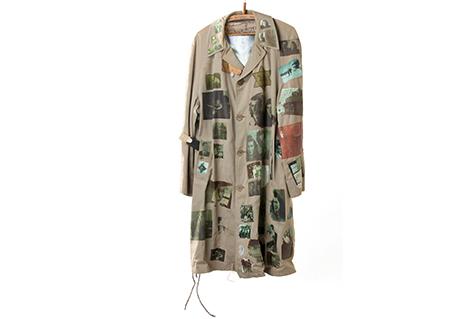
Rebuilding Europe
1945 - Europe is in ruins, its people lacking food, fuel and housing. Survival strategies are desperately needed, and war rationing continues so that at least basic needs are provided for. There are millions of refugees, exiles and displaced persons, all of them in search of shelter. Europe is largely dependent on the outside world for assistance.
Borders were redrawn and whole population groups were moved by force. The Western Allies accepted the westward shift of Polish borders and the Soviet Union’s control of the Baltic States. Other border changes were made in Italy, Bulgaria, Romania, Hungary and Czechoslovakia. Germany and Austria were divided into occupation zones.
Allied leaders puzzling Europe London, United Kingdom, 1945 Cartoon Reproduction Punch, London, United Kingdom
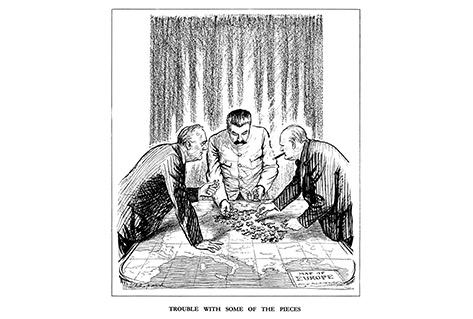
An acute shortage of men means that reconstruction work relies heavily on women, young people and prisoners of war.
Women working on rubble clearance Tallinn, Estonia, 1945 Photograph Rahvusarhiiv, Tallinn, Estonia

Bread queues are common, and resourceful people re-use whatever they can get their hands on for heating, clothing and other necessities.
Rationing cards Hungary, 1940s Replica Magyar Nemzeti Múzeum, Budapest, Hungary

Cold War
Between 1945 and 1949 a gulf opened between the former Allied powers on every international issue, with the USA, Great Britain and France on one side and the Soviet Union on the other. The dropping of atomic bombs on Japan in 1945 proclaimed the USA as the new global power. In 1949, the Soviet Union would reach the same status by developing its own atomic bomb.
Audio Guides
Sharp ideological differences between Western liberal democracies and Eastern communism resurfaced, increasing the chances of a new world war.
First Soviet Union atomic bomb Moscow, Soviet Union, second half of 20th century Photograph Политехнический музей / Polytechnic Museum, Russia, Moscow

Marshall Plan funds were offered to most Western and Eastern European countries but the Soviet Union instructed governments in countries under its influence to reject the offer, contributing to a widening of the continental divide. By the time the Plan ended all recipient countries had surpassed their pre-war economic levels.
Stalin tries blocking Marshall Plan The New York Times, United States, 1947 Edwin Marcus Cartoon Reproduction The New York Times, United States
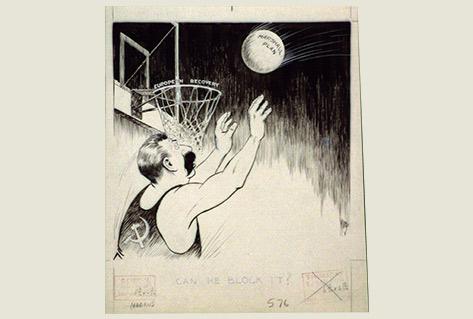
The Western and Eastern blocs were determined to present their particular model of society as being superior. The East adhered to Communist ideology supplanting Capitalism and relied on state-planned economies and single party rule. These economic and political characteristics were presented as merely an intermediary step to a classless and stateless society.
"CCCP USA" Paris, France, 1968 Roman Cieslewicz Poster Reproduction House of European History, Brussels, Belgium

The S-shaped plastic chair created by Danish designer Verner Panton is a typical product of this era. Designers in communist countries were equally keen to demonstrate their design credentials, with East Germany producing its own Z-shaped chair shortly afterwards.
S-shaped chair West Germany, 1960s Verner Panton (1926-1998) Plastic © European Union 2016 / House of European History, Brussels, Belgium

Enormous changes occurred in European education systems in this period. State funding increased at all levels thanks to booming economies and the welfare state, meaning better access for more children and young people – education was no longer just for the privileged minority.
Class photo Bulgaria, 1960s Private collection

Satellite cities and large estates were built following the principles of modernist architecture. Mile upon mile of identical grey cement blocks developed alongside transport and social service hubs. The negative effects of such extreme functionalism and harsh aesthetic standardisation on people’s lives and social fabric would only be recognised later.
Model of three room flat "WBS 70" East Germany, 1970s Replica Deutsches Historisches Museum, Berlin, Germany
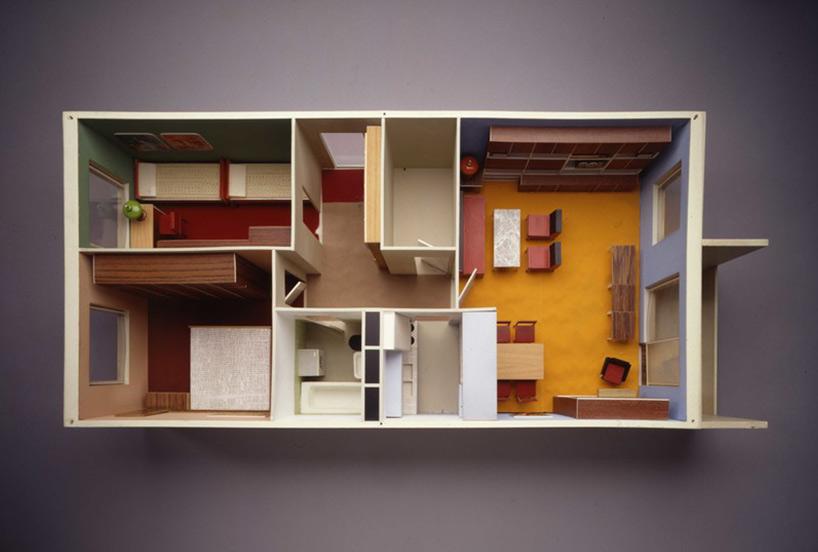
This chair from the Eastman dental clinic for children reminds us that healthcare in pre-war Europe was largely dependent on the generosity of private donors such as the American businessman George Eastman. In the 1930s he founded and sponsored several dental clinics in Europe, which after the war were incorporated into public health services.
Dentist chair from Eastman Dentist Clinic Stockholm, Sweden, 1950s Eastmaninstitutet, Stockholm, Sweden
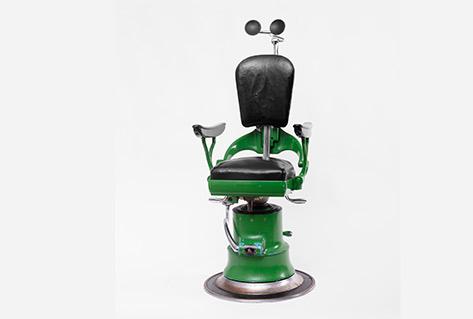
Owning a car, formerly the preserve of the rich, now became a possibility for increasing numbers of people and signified European prosperity. In the Eastern Bloc, however, where production never met demand, they were luxury items, sometimes with years-long waiting lists. Iconic models such as Italy’s FIAT sold licences in other continental states.
Zastava 750, produced under FIAT license Yugoslavia, 1978 House of European History, Brussels, Belgium

Milestones of European integration I
The Soviet Union’s control of Eastern Europe and its stand-off with the United States of America after World War II gave the world two new terms – the Iron Curtain and the Cold War. With American support, the conditions for closer cooperation in Western Europe grew.
In Western Europe, the hope of a united Europe grew in popularity as it felt increasingly caught between the two superpowers. Slowly, the idea of the continent as ‘the Third Force’ paved the way for intensified cross border cooperation
Europe in the Cold War France, around 1948 Poster Reproduction Centre international de recherche sur l'imagerie politique, Paris, France

If you are going to have a ‘United States of Europe’ you need concrete elements such as a passport and a common currency. As early as the 1940s, an independent association calling itself the European Movement was campaigning for this by distributing mock identity cards and banknotes.
Idea for a future European banknote, Original, House of European History, Brussels, Belgium
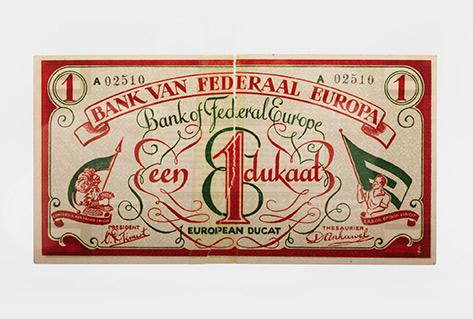
Look at the spelling of EUROP on this iron ingot from 1953. It omits the final letter ‘E’ as normally spelt in French, and ‘A’ as normally seen in German, Dutch and Italian. A striking example of the compromise at the heart of the new European Coal and Steel Community.
Ingot symbolising the Schuman plan Luxembourg, 1953 Iron Replica Fondation Jean Monnet pour l'Europe, Lausanne, Switzerland

Memory of the Shoah
Silence, non-recognition, repression, such was the manner in which the Holocaust or as it is called in Hebrew; Shoah was treated in the post-war period.
Nations, desperate to redeem self-esteem, put to the side feelings of guilt and complicity. They wallowed in their own memories of suffering and hardship instead of taking into account their own collaboration with the Nazi regime.
Today however, the acknowledgement of this unparalleled crime against humanity is at the core of discussions about a European memory.
The artists Ritula Fränkel and her husband Nicholas Morris created the artwork Josef’s Coat in 2001. The coat had belonged to Ritula’s father, Josef Fränkel, a survivor of the Shoah.
“Joseph's Coat” Darmstadt, 2001 Ritula Fränkel, Nicholas Morris © European Union 2016 / House of European History, Brussels, Belgium
